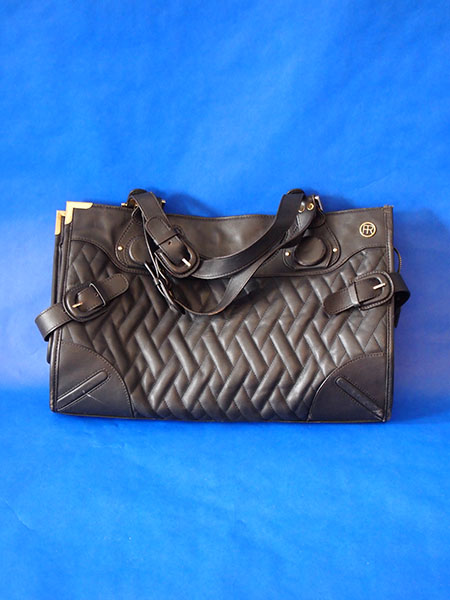![]() body | color | collections | commodity | cube | document | fabric | fetish | gender | glass | home | identity | living | machine | metal | minimal | mobility | narrative | olfactory | organic |
body | color | collections | commodity | cube | document | fabric | fetish | gender | glass | home | identity | living | machine | metal | minimal | mobility | narrative | olfactory | organic |
![]() pain | paper | plastic | plugs | power | protective | rectangular | ritual | round | sound | souvenir | spiritual | style | text-based | time | tool | touch | uniform | value | visual | warm | wood
pain | paper | plastic | plugs | power | protective | rectangular | ritual | round | sound | souvenir | spiritual | style | text-based | time | tool | touch | uniform | value | visual | warm | wood
| Outerwear: Felix Rey Black Purse | |||
Narrative: Black Purse with Leopard Print Inner Lining and diagonal stitch pattern on front. Felix Rey New York. Made in China 100% genuine leather, metal studs Friend Lily Rafii Band started Felix Rey with partner Sulaika Zarrouk in Manhattan. I occasionally receive a gift of a Felix Rey purse from supporters of the company. This purse was given to me as a holiday gift in 2009. It traveled with me from Varick Street in Manhattan to Brooklyn. Antelope, buckskin, lambskin, sheepskin, and cowhide are the hides most commonly used to make leather jackets. As soon as the skin is removed from the animal at the meat processing plant, it is refrigerated, salted, or packed in barrels of brine. It is then sent to the tannery where the skins undergo a series of processes designed to preserve and soften the hides. The work performed at the tannery is of utmost importance to insure that the resulting garment is of high quality. Sewing materials such as thread, lining, seam tape, buttons, snaps, and zippers are generally purchased from outside vendors and stored in the garment factory. The skins are trimmed and sorted according to size, weight, and thickness. It is necessary to remove any remaining proteins that could stimulate the growth of bacteria. To this end, the skins are soaked in revolving drums filled with water, bactericides, and detergents. Hair is removed with the application of chemical sprays or lime solutions. A scudding machine fitted with dull blades scrapes off any excess hair. After the skins have been tanned, they are washed once again and wrung out thoroughly. Then the skins are passed under a band knife, which cuts the skins to a uniform thickness, and placed on conveyer belts which carry them to drying tunnels. Usually, the skins are stretched on frames to prevent shrinkage during the drying stage. To combat the stiffness that drying produces, the hides are sprayed with water and soap and allowed to hang for a period of time. After the skins have been conditioned, they are placed in machines designed to rhythmically manipulate the leather so that the fibers are further loosened and made more flexible. In the final drying period, the hides are hung in vacuum-drying cabinets. When the skins are thoroughly dried, they are buffed with revolving steel cylinders covered with abrasive paper. Suede finishes are produced by passing the hides under high-speed emery wheels. At this point, glazes, dyes, and lacquers are applied. The skins are now ready to be sent to the garment factory.
|
 |
||
![]()
